June
30, 2021
13 min read
This story appears in the
June 2021
issue of
Entrepreneur. Subscribe »

Image Credit: Courtesy of Amazing Lash Studio
Why the Brand Seeks Multi-Unit Owners…
Amazing Lash Studio exists to make its customers look good. The eyelash-extension franchise serves members at 260 studios across the United States. But from a business standpoint, Amazing Lash also exists to serve its network of staff and franchisees. The company expects growth to continue at a pace of 30 to 40 new locations this year, and it’s targeting markets with low lash-studio saturation and a high opportunity for growth. To do that effectively, it’s looking for prospective franchisees with big goals — which is why 70 percent of its current franchisees are multi-unit operators.
“It’s not that we shy away from folks interested in owning single units, but for brand-new markets, we’re really looking for multi-unit owners who can become the single player in the area,” says Lauren Wanamaker, senior director of development. “And right now, in this climate, we’re really starting to see some novice franchisees who have a desire to create their own future and capture and protect an investment, from a long-term strategy.”
To find the right franchisees, Wanamaker and her team aren’t limiting themselves to people with the obvious backgrounds. They don’t care if someone has franchise or salon experience. Instead, they look for passion — and a desire to grow and empower a team.
“We are not a business where you can put a manager in place and walk away; it doesn’t work that way,” Wanamaker says. “At any given time, there are 20 to 30 people in a studio. That requires a fairly large team. So we need operators who want to build a team and really help those team members build their own careers within that business.”
The way Amazing Lash sees it, multi-unit operators can create more opportunity for everyone — enabling staff to work across multiple locations, acquiring a great number of loyal clients within a region, and rising through the ranks within the broader franchise organization. “The efficiencies in our business lie with the staff and the people,” Wanamaker says.
From a Multi-Unit Franchisee’s Perspective…
 Elaina Watley signed on as an Amazing Lash Studio franchisee in 2016. At the time, she was a new mom who’d spent her career in sports marketing, and she was looking for a secondary income and a role that would allow her to work with and support women. Today, she owns five locations across New Jersey, is exploring her sixth — and swears by the success and impact multi-unit ownership can create.
Elaina Watley signed on as an Amazing Lash Studio franchisee in 2016. At the time, she was a new mom who’d spent her career in sports marketing, and she was looking for a secondary income and a role that would allow her to work with and support women. Today, she owns five locations across New Jersey, is exploring her sixth — and swears by the success and impact multi-unit ownership can create.
You started with one store and now have five. In hindsight, do you wish you had opened multiple locations at once?
Yes; I will give everyone that advice. Don’t make my mistakes. Purchase multiple locations, and believe in yourself.
Did managing the business become easier as you opened more locations?
Scale creates sustainability. Across my locations, we have the same culture, the same strategy. We deal with leads and prospects the same; we offer the same customer service, digital marketing, brand messaging. And it’s helped me find a balance between my goals for myself as an entrepreneur, a mother, and a leader.
Related: 5 Ways to Manage Multiple Ventures for Maximum Success
How do you support your growing staff?
Though the girls are employed by me and Amazing Lash, I want them to see their work as an entrepreneurial endeavor. They’re building their client base, and so this business can be their own. I’ve hosted financial planning classes at night and taught them about marketing their brand on social media, and really promoting their own artistry and creating confidence in their work.
2. Pollo Campero Plays Offense in the Chicken Wars
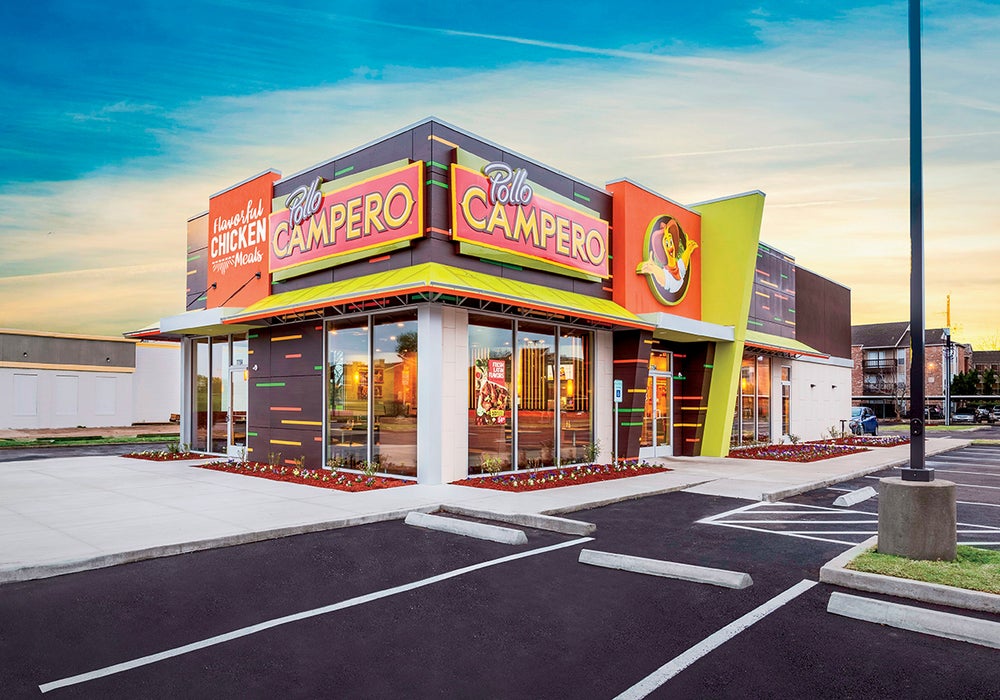
Image Credit: Courtesy of Pollo Campero
Why the Brand Seeks Multi-Unit Owners…
Quick-service chicken restaurants have become a booming, hyper-competitive space in recent years. Although Sam Wong spent 10 years of his career at Popeyes Louisiana Kitchen, he’s now happy to put all his eggs in the Pollo Campero basket.
Wong is the director of franchising at Pollo Campero, which has grown to 350-plus locations around the world since it started as a family-owned restaurant in Guatemala in 1971. Now the brand’s beloved traditional recipes create such excitement that new locations in the U.S. often draw five-hour lines upon opening.
Wong thinks he can spot a brand that’s ready to pop, and it’s why he flew to Pollo Campero. “In 2002 at Popeyes, we were considered a third-tier brand, and I couldn’t get landlords to take our phone calls,” he says. “Now, of course, every landlord wants Popeyes. And Pollo Campero is next — we’re preparing for that now.”
Related: How Many Franchise Locations Should You Own?
That preparation relies heavily on developing multi-unit franchisees who can sign on for a minimum three-store agreement. Wong says the brand’s ideal franchisee profile is based on four buckets: financial capability, operational experience, development knowledge, and culture fit. “That overlaps with the attributes of some of the best multi-unit operators in the country,” Wong says. “But I don’t mean institutional franchisees who own 200, 300, or 400 locations — that doesn’t fit our growth profile. We are looking for the middle trend of multi-unit franchisees, guys who own 10, 15, or 20 stores and can be present.”
His growth plan also involves capitalizing on the realities and impact of the pandemic: Small-business closures across the country created a surplus of retail storefronts and spaces, and Wong sees an opportunity to lay the foundation for big growth.
“It’s a small bit of good news for our brand as we come out of the pandemic,” he says. “For brands like Starbucks and McDonald’s, it can feel like a game of Monopoly: ‘I already put a burger concept here, so no other burger concepts can exist now.’ It’s our turn. We’re going to put Pollo Campero here and own it. I feel good about our potential.”
From a Multi-Unit Franchisee’s Perspective…
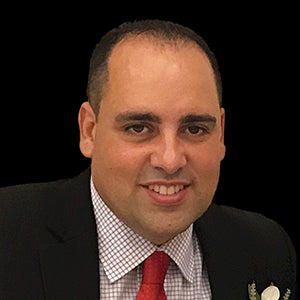 Andy Cabral had created a robust business with his mom and brother, operating multiple Dunkin’ locations on the East Coast. In 2011, they opened their first Pollo Campero after signing a multi-unit agreement — and had to adapt to a very different strategy. Now he’s working to care for (and grow) both sides of the operation.
Andy Cabral had created a robust business with his mom and brother, operating multiple Dunkin’ locations on the East Coast. In 2011, they opened their first Pollo Campero after signing a multi-unit agreement — and had to adapt to a very different strategy. Now he’s working to care for (and grow) both sides of the operation.
What’s different about growing the Pollo Campero operation versus Dunkin’?
You have to be a little more strategic about growth. You can put a Dunkin’ on every corner, but Campero is less known. So to capture the market, we’re looking for that Central American customer who will be familiar with these recipes. We’re in the D.C. area, working across Virginia and Maryland, where there are a lot of Central Americans. The first week of our first location in 2011, we served 20,000 people — 75 percent above our projection.
What’s it like being a multi-unit owner across multiple brands?
We thought we’d pick up staffing efficiencies, but we learned that the culture of Dunkin’ — get customers in and out fast — doesn’t translate to the customer service of Campero, where people sit and linger and talk. So operationally, they don’t cross each other. But it has created synergies for office services, like payroll and HR.
Related: 6 Ways Being in a Franchise System Helped Me Survive Covid-19
What’s your goal with Pollo Campero?
It’s less about store count and more about sales volume. The brand has been really helpful when it comes to looking for more locations that make sense. We’re about to sign another development agreement that will expand our reach to Virginia.
3. Urban Air Adventure Park Expands Its Offerings, and Its Needs
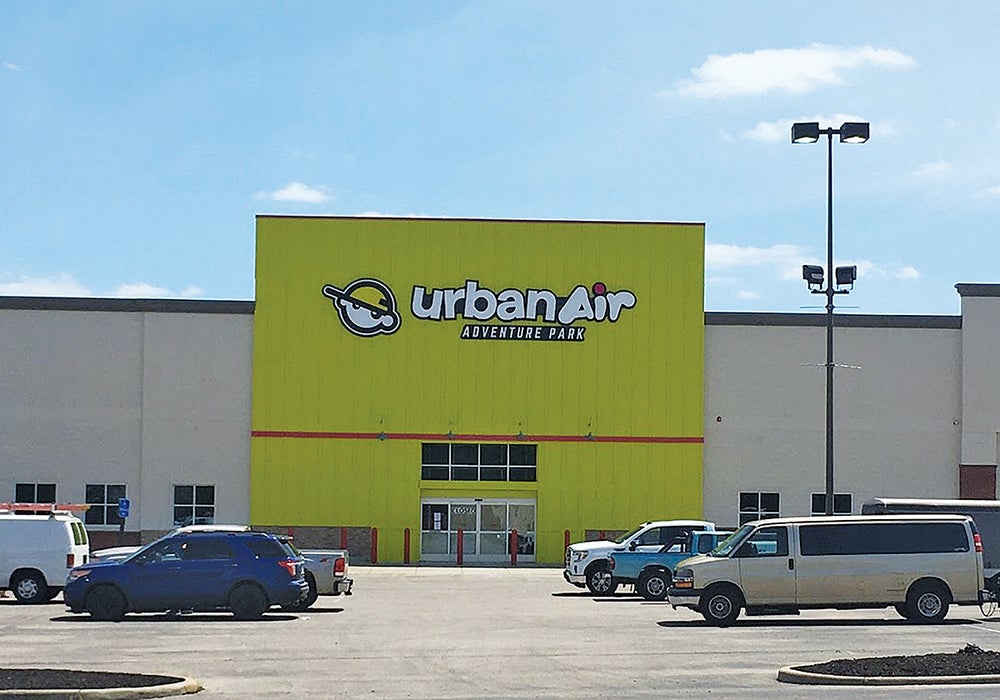
Image Credit: Courtesy of Urban Air Adventure Park
Why the Brand Seeks Multi-Unit Owners…
Urban Air Adventure Park is trying to corner the market on fun. The company launched in 2011 as an indoor trampoline park, but as competition in that space grew, it doubled down on good times and has now evolved into a full-fledged indoor adventure park with everything from go-karts and indoor skydiving to laser tag and a fast-casual restaurant.
When the brand started franchising in 2014, it took a mom-and-pop approach — focusing on single-unit operators who were passionate about family fun. But as Urban Air’s success and profile grew, it shifted its focus in 2018 to recruiting more experienced multi-unit owners, as well as developing them from within…which can often be the bigger challenge.
Related: Here Are the Benefits of Multiple LLCs or Corporations for Your Businesses
“My wife and I have three daughters, and having kids has been amazing, but I will say that it was a lot tougher going from one kid to two than it was to go from two to three, and the exact same thing is true of franchise expansion,” says Josh Wall, EVP and chief franchise officer. “Helping a franchisee go from a single park to two may sound like an incremental increase in their effort, but it really is like a 100 percent increase in effort.”
To help guide franchisees through that, Wall and his team are focused on not just providing franchisees with the tools they need to grow but making sure that both parties are aligned when it comes to a clear mission and goals.
“I’m not interested in someone increasing their exposure if they don’t have a clearly defined thesis,” he says. That can be as simple as building a multi-unit business with geographic concentricity or wanting to create growth opportunity for top-performing staff. “When we understand those motivations, the plan starts to unfold. That’s when I get excited — much more than if someone says, ‘Boy, I’m really enjoying this 35 percent EBITDA margin.’ Not that there’s anything wrong with that, but we get more fired up about a passionate plan.”
From a Multi-Unit Franchisee’s Perspective…
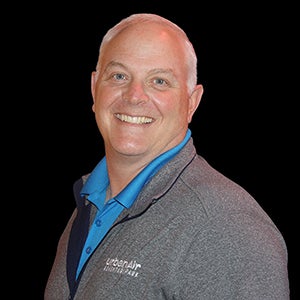 Scott and Abby Hussey owned one location of the Goddard School, an early-childhood-education company. But by the time they were ready to expand, Scott says they’d missed out on all the appealing territories. So the couple sold their business and turned their attention to Urban Air, and in 2019 opened their first location in Colorado, followed shortly by a second. Now, Scott says, they’re planning for three.
Scott and Abby Hussey owned one location of the Goddard School, an early-childhood-education company. But by the time they were ready to expand, Scott says they’d missed out on all the appealing territories. So the couple sold their business and turned their attention to Urban Air, and in 2019 opened their first location in Colorado, followed shortly by a second. Now, Scott says, they’re planning for three.
What did you learn at Goddard that helped you transition to being Urban Air owners?
The lesson was, we should have opened multiple locations right away. If you believe in the brand, capitalize on it and move quickly, otherwise territories get consumed and the dogs are left.
Related: How to Create Multiple Revenue Streams For Your Business
Was it difficult moving into multi-unit territory?
It’s kind of like going from having one to two kids.
That’s exactly what your franchisor said.
That’s so funny; I promise we didn’t rehearse this! But it did force us to divide and conquer as owners, and to find efficiencies — like we were able to use our first location as a training facility for our management team as we got our second store set up. We’re getting ready to open a third now, and I do feel like it will be easier. With every location, you get a little smarter.
4. For Dunkin’, Big Franchise Networks Help Make Big Moves
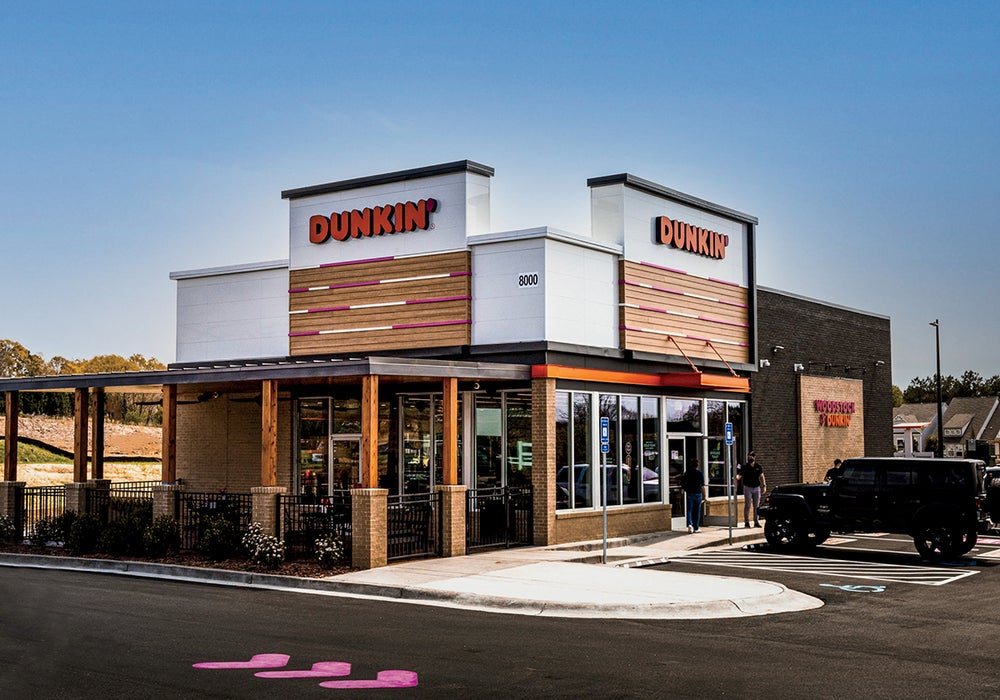
Image Credit: Courtesy of Dunkin’
Why the Brand Seeks Multi-Unit Owners…
America runs on Dunkin’, as the slogan goes — and Dunkin’ runs on multi-unit franchisees. The company has around 2,300 franchisees within its system, and an estimated 85 percent are multi-unit operators. A handful even qualify as “mega” franchisees, with more than 200 stores within their networks.
“There are many pros to working with multi-unit operators,” says Grant Benson, senior vice president of franchising and development at Inspire Brands, parent company to Dunkin’. “One is that as you bring forward business opportunities to franchise networks, you really only need to gain endorsement from that operator to make a big impact.”
Benson points to new marketing initiatives or operations-based programs and changes, which the company invests in and vets before asking individual franchisees to implement. Getting buy-in from an operator with 50 locations makes an impact, instantly. “Multi-unit operators can create big wins,” Benson says. “Those conversations are important when we’re working with owners with just a couple of units, but then we’re impacting just a couple of stores.”
Related: Why You Should Make the Move to a Multi-Unit Franchise
But, Benson says, the responsibility is ultimately on him and his team to create the kind of growth opportunities that franchisees — regardless of store count — will want to take advantage of.
“Our franchisees are very smart and very entrepreneurial,” he says. “If we’re asking them to pursue an opportunity that may require reinvestment, we’d better be sure there will be a solid return for them. And especially with multi-unit owners, we’re here to provide stability and support as they scale. If we do that, we can build a solid, trusting relationship.”
From a Multi-Unit Franchisee’s Perspective…
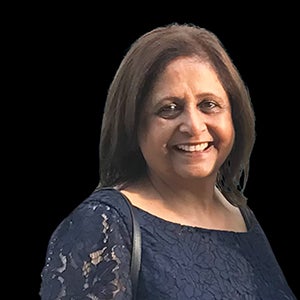 Taru Patel has been part of the Dunkin’ family for 27 years, and she currently owns 18 stores across Indiana and one in Illinois. What’s the key to her success and continued growth? Faith in her franchisor, and faith in her team.
Taru Patel has been part of the Dunkin’ family for 27 years, and she currently owns 18 stores across Indiana and one in Illinois. What’s the key to her success and continued growth? Faith in her franchisor, and faith in her team.
You started with two locations and now have 19, with five more in the works. What has that growth been like?
There are so many tools available to you as you grow, especially to help you train your crew. We’re hands-on about follow-up — we don’t sit in an office as owners. So we’re out seeing and recognizing the dedication of our managers and leaders, and we empower them, because if those leaders and managers are happy, your whole team will be happy.
What kind of support do you get from the franchisor?
Over the past 15 years, that relationship has really shifted, and we feel like a team. I can pick up the phone and get my director or VP at any time. That’s a big thing for our business.
Related: What You Really Need to Look for When Considering a Franchise
Is there a number of stores you’d like to reach?
There’s no limit! But I want to make sure we grow intentionally and not just to grow. Accuracy and cleanliness and standards and systems are important. To create that with the help of your managers and corporate leadership is important. With all that help, you can succeed, 100 percent.
loading…


